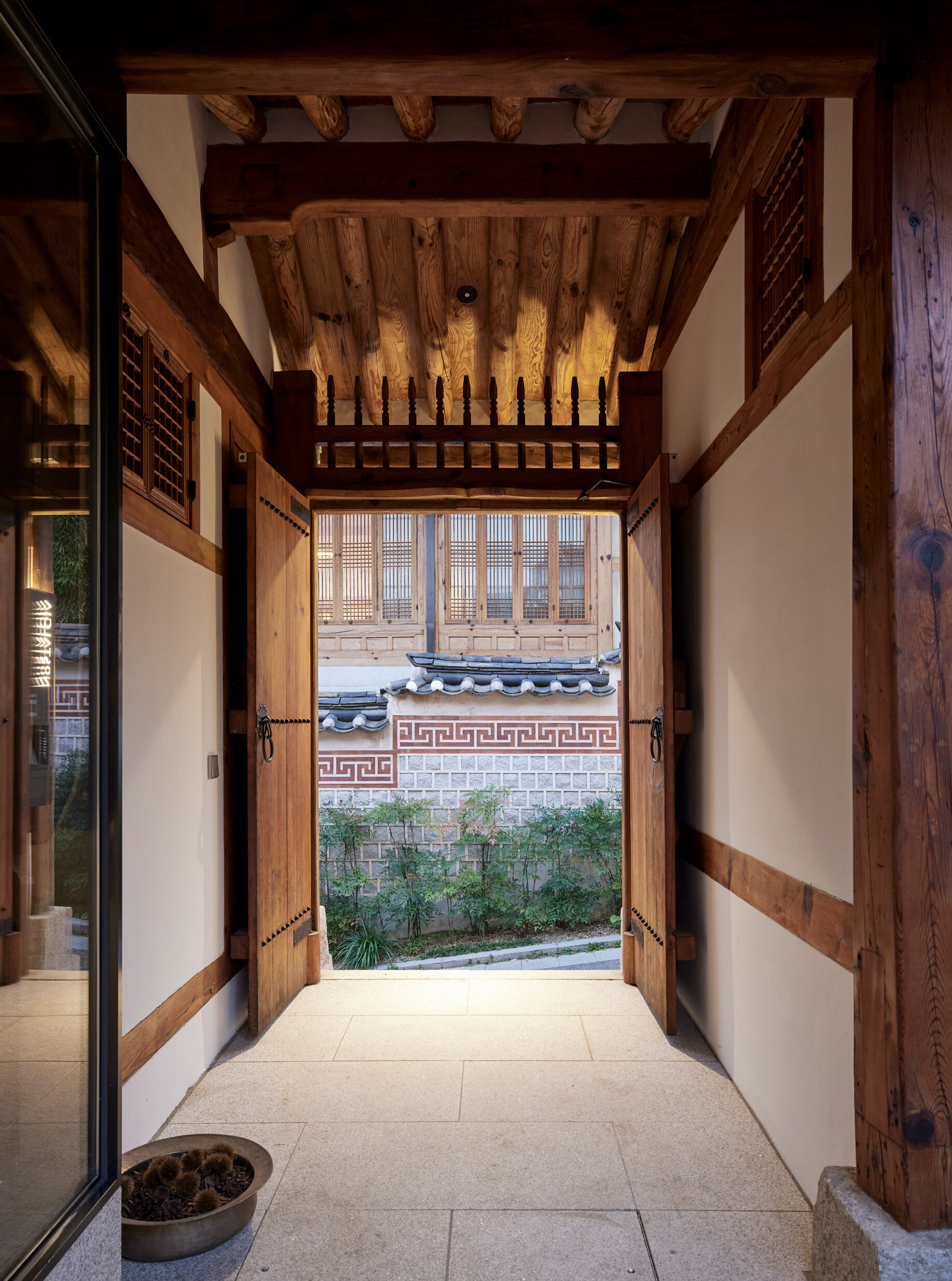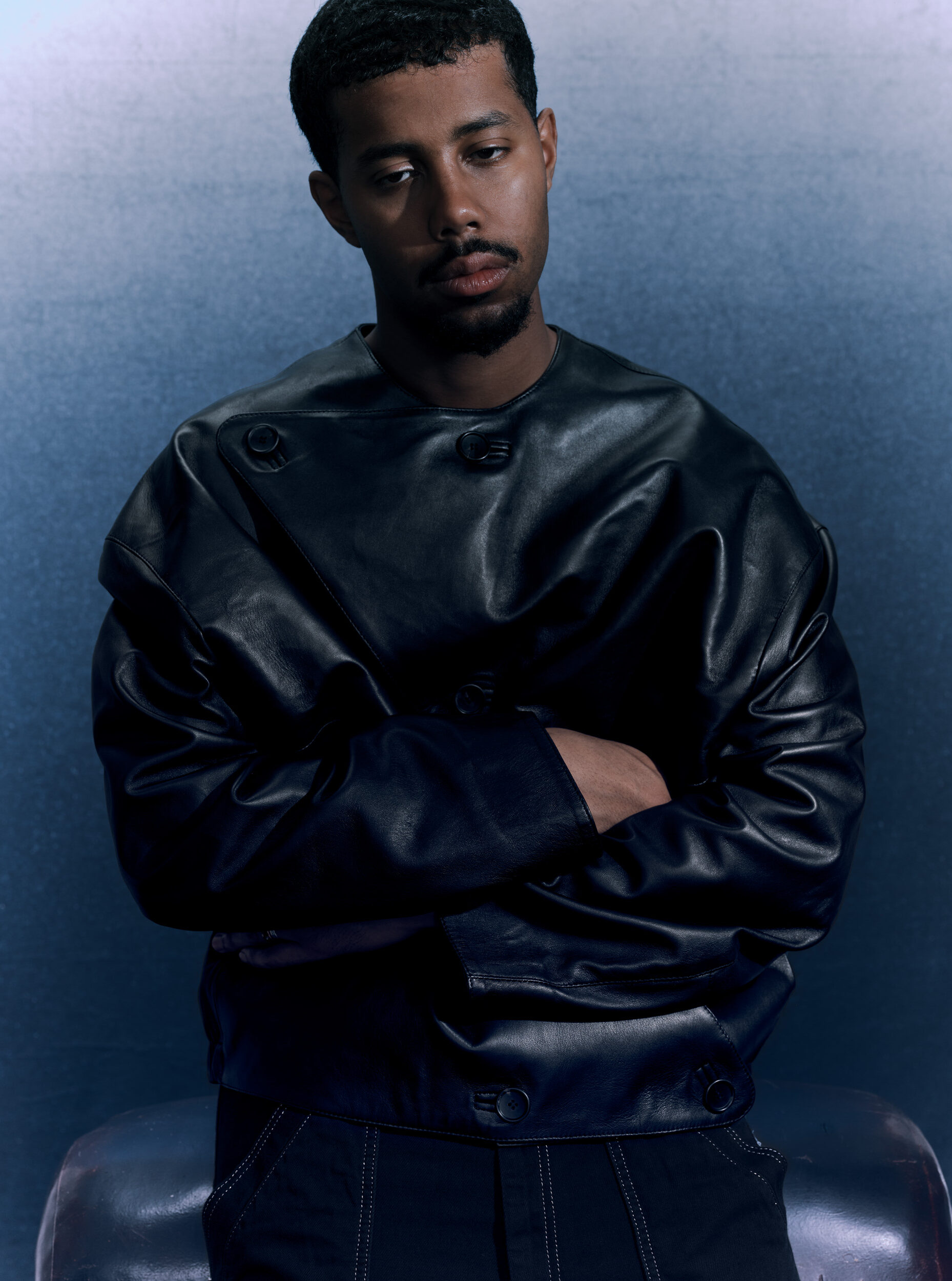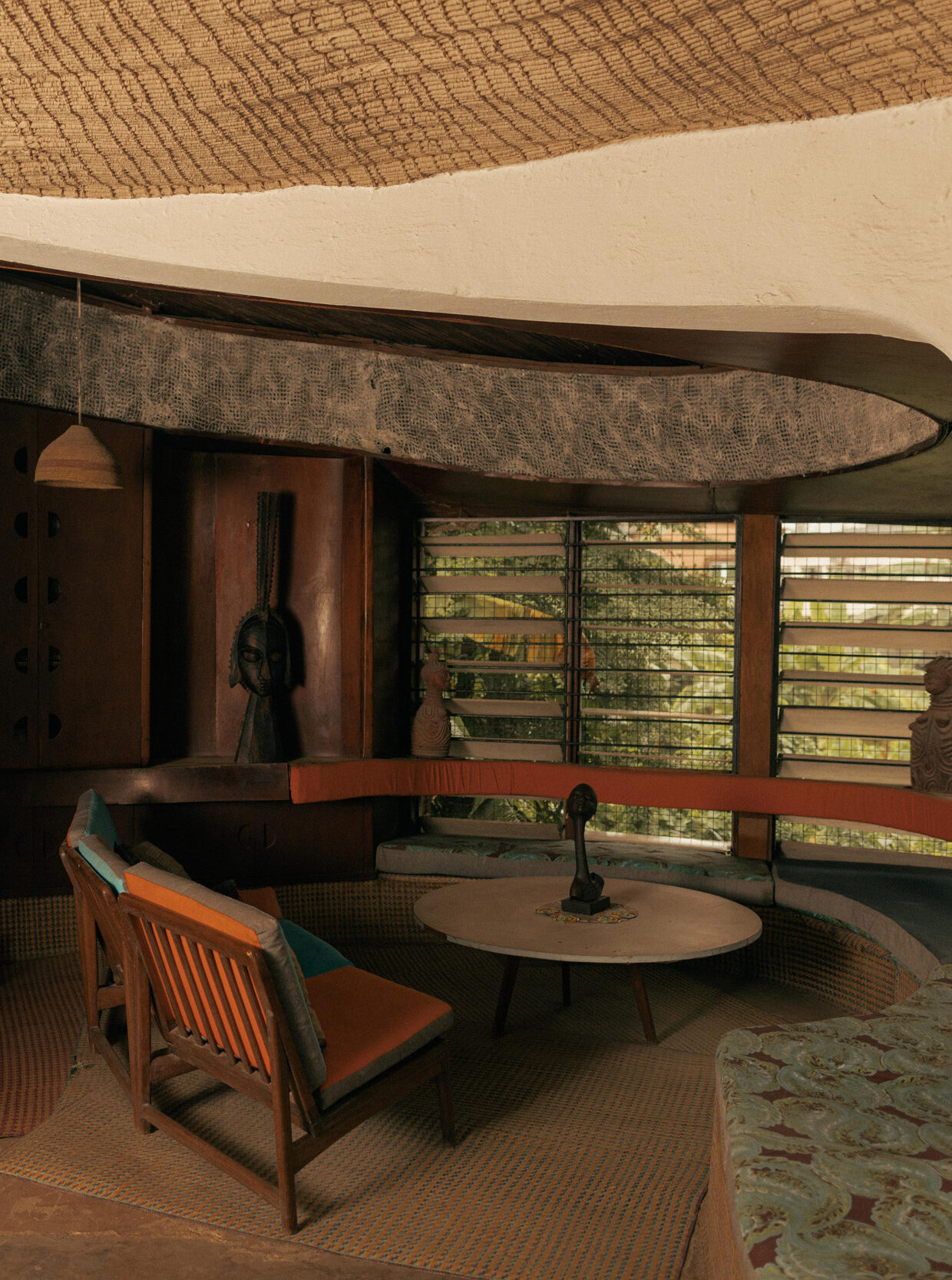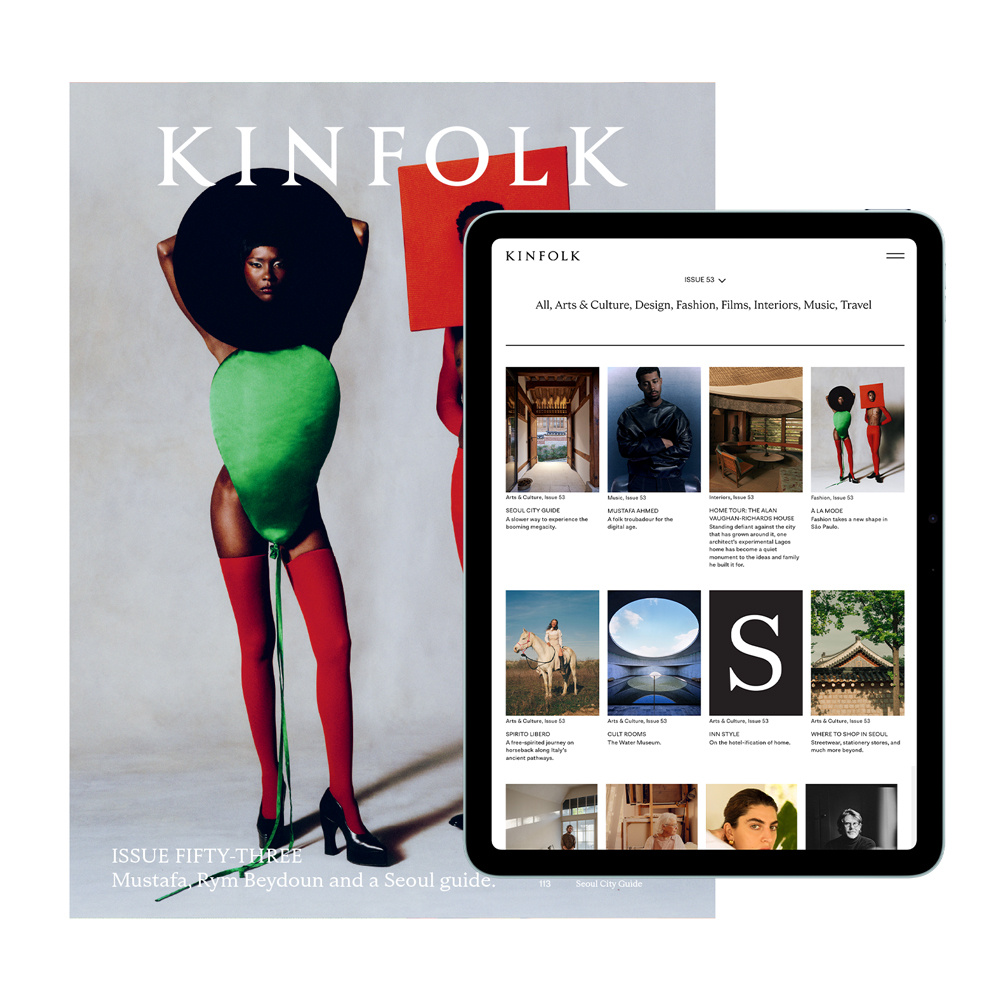
THINGS TO SEE AND DO IN SEOUL문화와 예술
THINGS TO SEE AND DO IN SEOUL문화와 예술
문화와 예술
Arumjigi Culture Keepers Foundation
The Arumjigi Culture Keepers Foundation began in 2001 as a group of volunteers who came together to weed the grounds of palaces. Since then, it has grown into a nonprofit organization that works to preserve and promote traditional Korean culture through research, education and restoration programs. Their headquarters in Seochon, designed in 2013 by architecture practice M.A.R.U., sits opposite the west wall of Gyeongbokgung Palace and combines a contemporary structure in wood, glass and concrete with a hanok house, built using traditional techniques. A space on the ground floor hosts a program of exhibitions that showcases both traditional Korean crafts and the contemporary artists and makers who draw inspiration from them, reflecting the foundation’s mission of bringing traditional Korean culture into conversation with the 21st century. There is also a coffee shop and reading room and a store that sells a range of homewares produced by artisans.
Arumjigi continues to preserve cultural heritage beyond its walls, and the foundation is involved in projects such as restoring the Jeukjodang Hall (the king’s executive office in Deoksugung Palace), improving the lighting of Changdeokgung Palace’s main halls and preserving the historic zelkova tree in Wonjeong-ri village. (RR)
35-32 Tongui-dong, Jongno District

Photos: Jonas Bjerre-Poulsen

The walls of the Gyeongbokgung Palace in Seochon, an area known for its historic hanok houses and tranquil streets.

The first building of the Kukje Gallery complex in Samcheong, K1, features a sculpture—Walking Woman on the Roof—by Jonathan Borofsky.

The facade of the Dongdaemun Design Plaza is formed from 45,000 aluminum panels. Photo: Inigo Bujedo Aguirre / Getty Images
CULTURAL LANDMARKS…
GYEONGBOKGUNG PALACE: The Gyeongbokgung Palace is the largest of the “Five Grand Palaces” built during the 505-year-rule of the Joseon dynasty. Established in 1395, three years after the dynasty was founded, the palace was demolished during the Japanese occupation of Korea and, since 1990, rebuilt by the Korean government. (GU)
DONGDAEMUN DESIGN PLAZA: Designed by British-Iraqi architect Zaha Hadid, the striking Dongdaemun Design Plaza opened in 2014 as a cultural hub, with a convention center, library, education facilities, galleries and landscaped rooftop gardens. The amorphous structure replaced the dilapidated Dongdaemun Stadium. (GU)
Kukje Gallery
A short walk from the National Museum of Modern and Contemporary Art, the commercial art gallery Kukje has been gradually expanding on its site in Samcheong since it moved there in 1987. Three contemporary spaces, as well as a restored hanok viewing room, showcase contemporary paintings and sculptures by acclaimed Korean and international artists including Haegue Yang, Kimsooja, Elmgreen & Dragset and Louise Bourgeois (kukje means “international” in Korean). The architecture of Kukje is notable in its own right: The third addition to the complex, built in 2012, has a facade formed from a mesh blanket of more than 500,000 hand-welded stainless-steel rings. (RR)
54 Samcheong-ro, Jongno District
Leeum
Leeum, Samsung Museum of Art is operated by the Samsung Foundation of Culture, which was established in 1965. The museum opened in Hannam in 2004 and houses the foundation’s collection of traditional Korean and modern and contemporary art. Museum 1, designed by Mario Botta, is dedicated to works that span Korea’s ancient history through to the end of the Joseon dynasty in 1910; the collection includes 36 officially designated national treasures. Museum 2, designed by Jean Nouvel and Rem Koolhaas, features modern and contemporary artists including Nam June Paik, Mark Rothko and Damien Hirst. There is also a sculpture garden with works by Anish Kapoor and Alexander Calder. (RR)
60-16 Itaewon-ro 55-gil, Yongsan District
CULTURAL LANDMARKS…
GYEONGBOKGUNG PALACE: The Gyeongbokgung Palace is the largest of the “Five Grand Palaces” built during the 505-year-rule of the Joseon dynasty. Established in 1395, three years after the dynasty was founded, the palace was demolished during the Japanese occupation of Korea and, since 1990, rebuilt by the Korean government. (GU)
DONGDAEMUN DESIGN PLAZA: Designed by British-Iraqi architect Zaha Hadid, the striking Dongdaemun Design Plaza opened in 2014 as a cultural hub, with a convention center, library, education facilities, galleries and landscaped rooftop gardens. The amorphous structure replaced the dilapidated Dongdaemun Stadium. (GU)

문화와 예술
SongEun Art
and Cultural Foundation
The SongEun Art and Cultural Foundation has played an important role in promoting contemporary art in Korea and in supporting young local artists since it was established in 1989. In 2021, the nonprofit foundation opened a new space in Chungdam designed by Herzog & de Meuron. The building has a striking triangular profile, presenting to the street as a 193-foot-tall concrete monolith while reducing to the level of the adjacent low-rise buildings at its rear. Inside, there are artist studios and exhibition spaces that show a mix of established international and emerging Korean artists. (RR)
441 Dosan-daero, Gangnam District



Photo: Daniele Venturelli / Getty Images
문화와 예술
Korean Furniture
Museum
The Korea Furniture Museum is located in the affluent neighborhood of Seongbuk, an area in the north of Seoul that is known for ambassadors’ residences and the remnants of the Seoul Fortress Wall. Established in 1993 by owner and director Chyung Mi-sook, the museum is dedicated to traditional Korean furniture. The museum is housed in several hanok structures, brought together from across Korea and arranged as a village, to offer a window into the experience of the Korean nobility during the Joseon dynasty. It includes fragments salvaged from Changgyeonggung Palace in Seoul following its demolition in the 1970s. Rooms—which have been arranged to emulate the interiors of aristocratic homes—demonstrate the elaborate rules around decoration and social status in Korea, as well as the principle of chagyeong, or “borrowed scenery,” which incorporates the landscape into the architecture by, for example, framing it in a window. Of the 2,500 pieces that Chyung has been collecting since the 1960s, about 550 are on display at any given time. Visits to the Korea Furniture Museum are only possible as part of a guided tour and should be booked well in advance. Access can be difficult as there are no sidewalks—the museum recommends taking a five-minute taxi from Hansung University Station. (RR)
121 Daesagwan-ro, Seongbuk District



